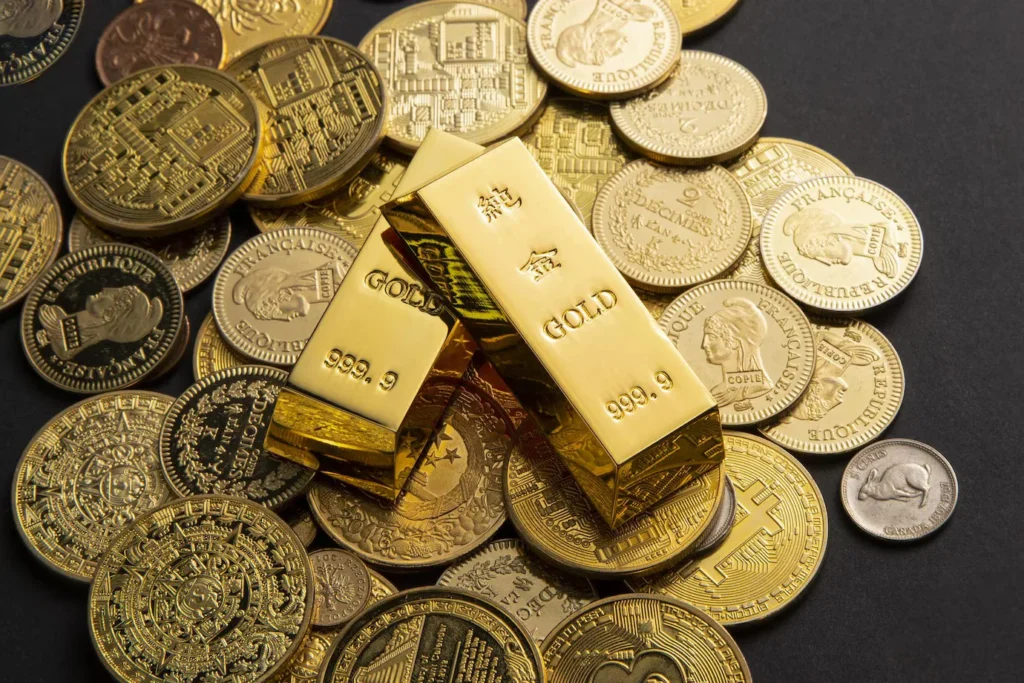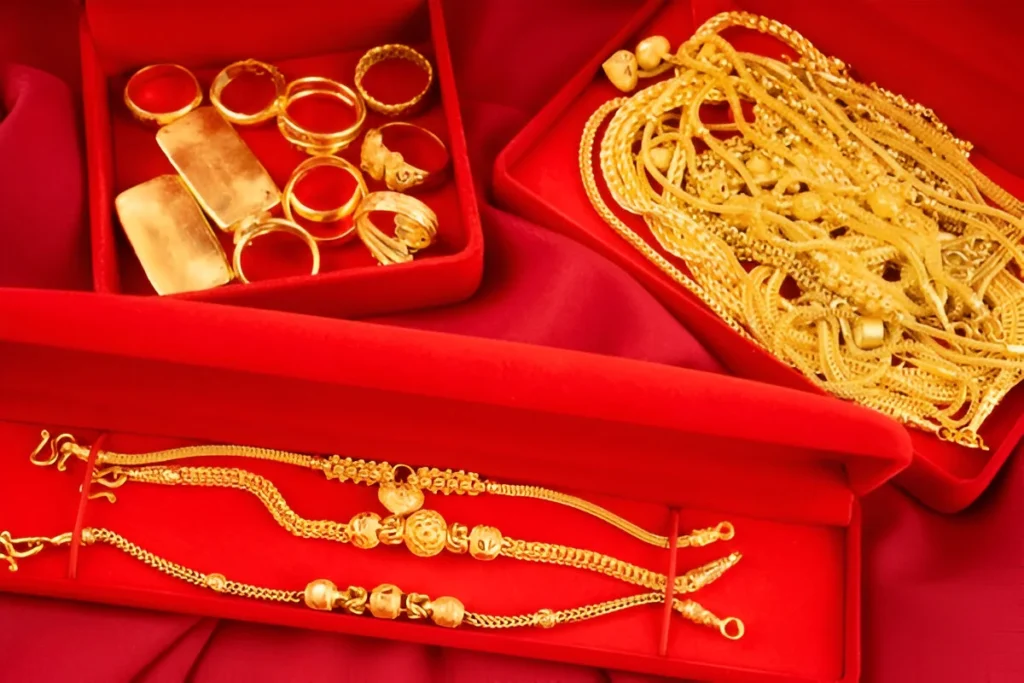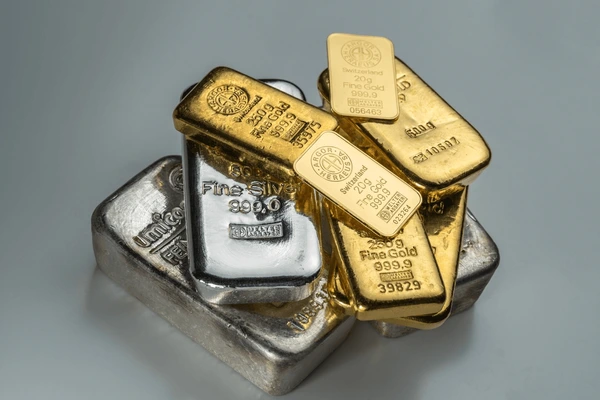Sayanava Sinha Roy
27.03.2025
The Evolution of Gold Jewelry: From Vintage to Modern Trends
The Evolution of Gold Jewelry has shaped fashion for centuries. From vintage craftsmanship to modern innovations, discover how gold jewelry trends have transformed over time.
Table of Contents

The Timeless Journey of Gold Jewelry: From Tradition to Innovation
Gold jewelry has long been a symbol of wealth, status, and personal expression. Across different eras, it has undergone significant transformations, adapting to cultural shifts, technological advancements, and changing consumer preferences. From intricately handcrafted vintage pieces to sleek, modern designs created using cutting-edge techniques, the evolution of gold jewelry is a fascinating journey.
Understanding these transformations helps jewelry enthusiasts appreciate the artistry behind every piece and make informed decisions when purchasing or investing in gold jewelry.
The Ancient Roots of Gold Jewelry
Gold has been treasured since ancient civilizations, with some of the earliest gold ornaments dating back over 6,000 years. Civilizations such as the Egyptians, Greeks, and Romans used gold to craft exquisite jewelry, often adorned with precious stones and intricate engravings.
Gold Jewelry in Ancient Times
- Egyptian Era (3000 BCE – 500 BCE):
- Gold was considered the “metal of the gods.”
- Pharaohs and high priests wore elaborate gold jewelry as a symbol of divine power.
- Amulets, cuffs, and necklaces were often embedded with lapis lazuli and turquoise.
- Greek and Roman Influence (500 BCE – 500 CE):
- Greek artisans introduced filigree and granulation techniques.
- Romans popularized the use of gold rings, brooches, and coin pendants.
- Engraved gemstones were frequently incorporated into jewelry designs.
- Indian Gold Jewelry Traditions:
- India has been one of the largest consumers of gold jewelry for centuries.
- Intricate temple jewelry and bridal gold sets have deep cultural significance.
- Gold has always been seen as an investment and a symbol of prosperity.
Medieval and Renaissance Gold Jewelry
During the medieval period, gold jewelry became more symbolic, often featuring religious motifs and protective charms. The Renaissance (14th-17th century) saw an artistic revival, with jewelers experimenting with intricate patterns and gemstones.
Key Trends in Gold Jewelry (Medieval to Renaissance)
- Medieval Period:
- Gold crosses and religious pendants became common.
- Cloisonné enamel and colored gemstones enhanced gold pieces.
- The nobility displayed status through personalized gold rings and brooches.
- Renaissance Era:
- Jewelry designs became more elaborate and inspired by nature.
- Portrait miniatures were set in gold lockets.
- Goldsmithing techniques advanced, leading to refined craftsmanship.

The Rise of Vintage Gold Jewelry
The late 18th and 19th centuries saw the emergence of distinct jewelry styles, each reflecting the artistic movements of the time.
Notable Vintage Gold Jewelry Eras
- Victorian Era (1837-1901):
- Gold lockets, charm bracelets, and cameos gained popularity.
- Sentimental jewelry with hidden compartments was widely worn.
- Rose gold emerged as a favored metal.
- Art Nouveau (1890-1910):
- Nature-inspired gold designs with floral and animal motifs.
- Soft, flowing patterns characterized by enamel detailing.
- Handcrafted pieces emphasized artistic individuality.
- Art Deco (1920-1940):
- Geometric shapes and bold gold settings became the norm.
- White and yellow gold combinations gained traction.
- Machine production introduced precision-cut designs.
- Retro Era (1940-1960):
- Chunky gold bracelets, cocktail rings, and sculptural designs.
- Hollywood influenced glamorous and oversized gold pieces.
- Mix of yellow, rose, and white gold in jewelry trends.
Modern Innovations in Gold Jewelry
As technology and consumer preferences evolved, modern gold jewelry took on a minimalist yet sophisticated appeal. Today’s trends blend tradition with innovation, catering to diverse tastes.
Contemporary Trends in Gold Jewelry
- Minimalist Gold Jewelry:
- Sleek, dainty designs like thin gold chains, stackable rings, and small hoop earrings.
- Perfect for everyday wear and layering.
- Sustainable and Ethical Gold Jewelry:
- Rise in demand for recycled gold and eco-friendly sourcing.
- Conflict-free gold production gaining importance.
- Personalized and Custom-Made Pieces:
- Name necklaces, engraved rings, and birthstone gold jewelry.
- Jewelry tailored to individual preferences.
- Smart Gold Jewelry:
- Integration of technology in gold accessories (e.g., smart rings with NFC technology).
- Wearable gold pieces that serve both fashion and functionality.
- Gold-Plated and Gold-Filled Jewelry:
- Affordable alternatives gaining popularity among younger buyers.
- Gold vermeil and gold-filled options offering durability and style.
The Future of Gold Jewelry: What’s Next?
As consumer preferences continue to shift, gold jewelry is expected to embrace even more innovation. The future will likely include:
- 3D-printed gold jewelry for customized designs.
- AI-driven jewelry styling suggestions.
- Blockchain technology for authentic gold tracking.
- Sustainable and lab-grown gold options.
These advancements will ensure that gold jewelry remains a timeless and cherished investment.

FAQs About Gold Jewelry and Its Evolution
1. What is the most valuable vintage gold jewelry era?
The Art Deco and Victorian eras are highly valued due to their craftsmanship, design intricacy, and historical significance.
2. How has technology influenced modern gold jewelry trends?
Technology has enabled 3D printing, AI-driven designs, and the rise of smart jewelry, making gold accessories more innovative and personalized.
3. Why is gold jewelry considered a good investment?
Gold retains its value over time, offers liquidity, and serves as a hedge against inflation, making it a popular investment choice.
4. What is the difference between vintage and modern gold jewelry?
Vintage jewelry often features handcrafted, intricate details, while modern designs focus on minimalism, technology integration, and sustainability.
5. How can I authenticate vintage gold jewelry?
Look for hallmarks, consult an expert, or have the piece appraised by a certified gold buyer to verify its authenticity.
Gold Jewelry: An Everlasting Symbol of Beauty and Value
The Evolution of Gold Jewelry showcases how craftsmanship, cultural influences, and technology have shaped the jewelry industry. From handcrafted vintage pieces to contemporary, tech-infused designs, gold continues to be a timeless and valuable asset. Whether you’re drawn to classic Victorian lockets or sleek, modern chains, understanding these trends allows you to make informed choices when buying or investing in gold jewelry.
Consulting with a reputed gold buyer can ensure informed decision-making for those seeking expert guidance on gold valuation and authenticity. Gold’s journey through history proves that while styles may change, their significance remains eternal.
Popular Post



